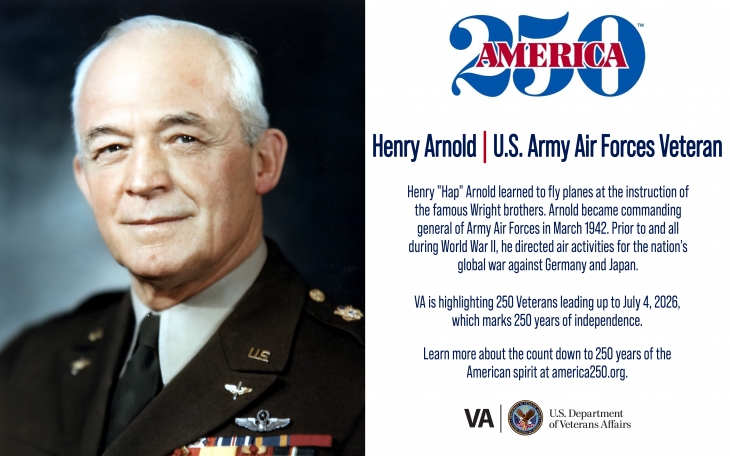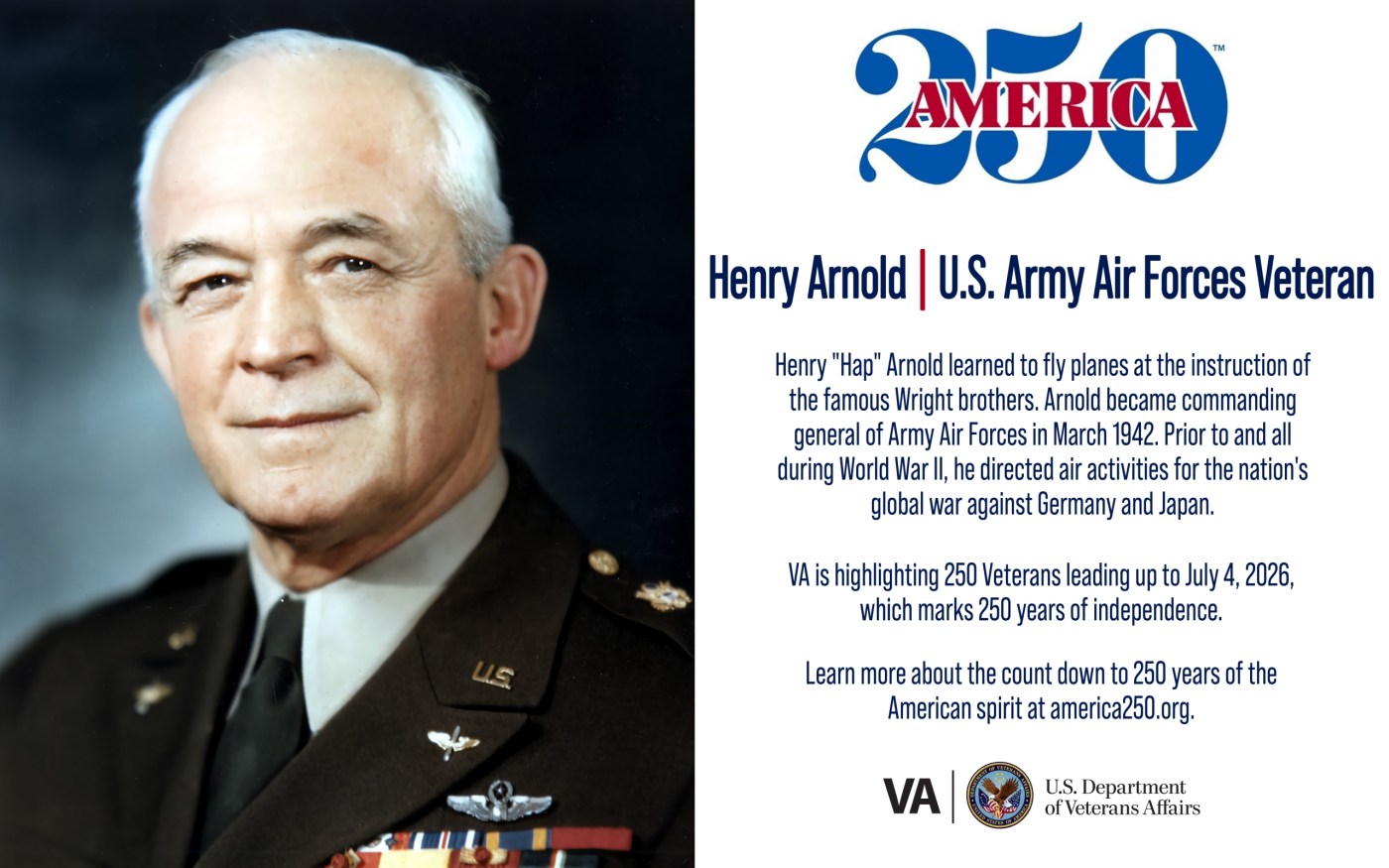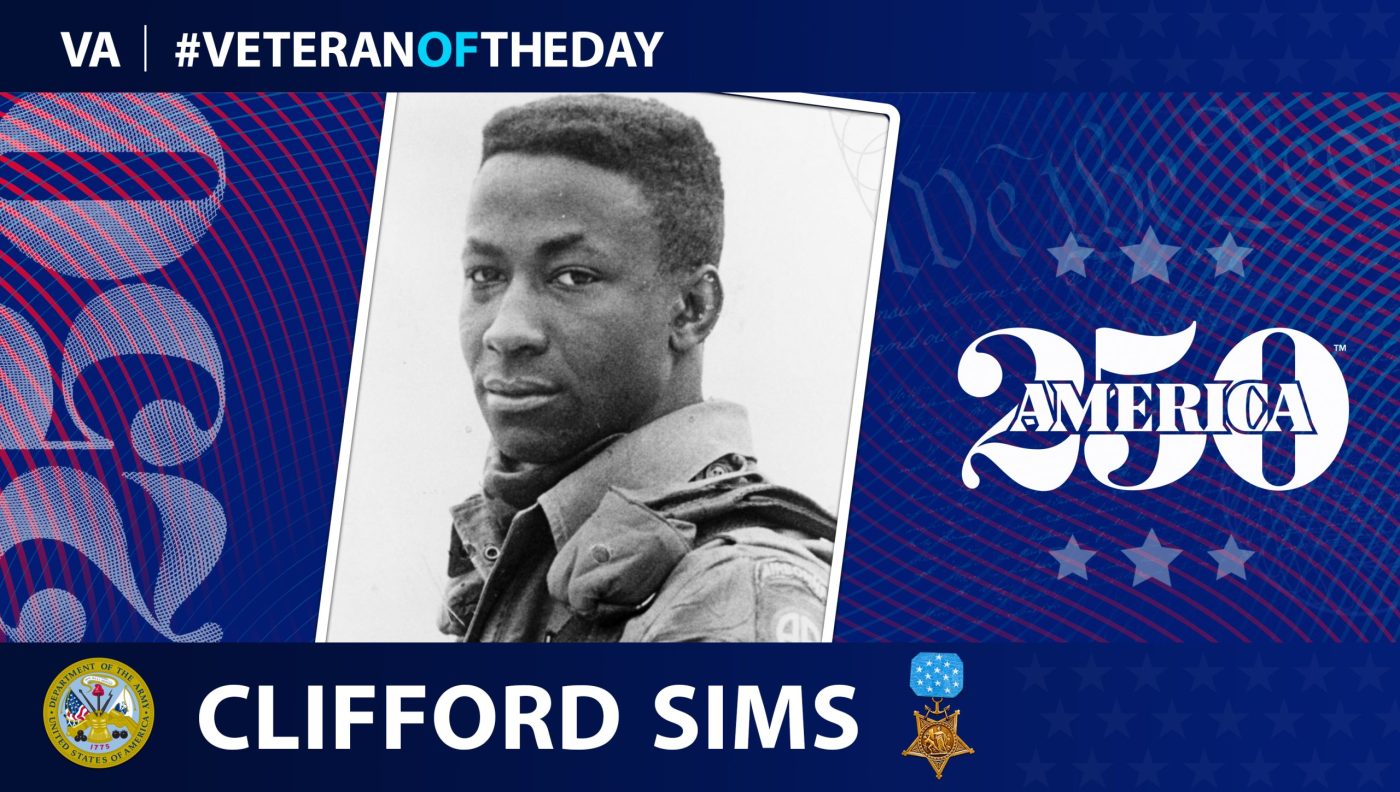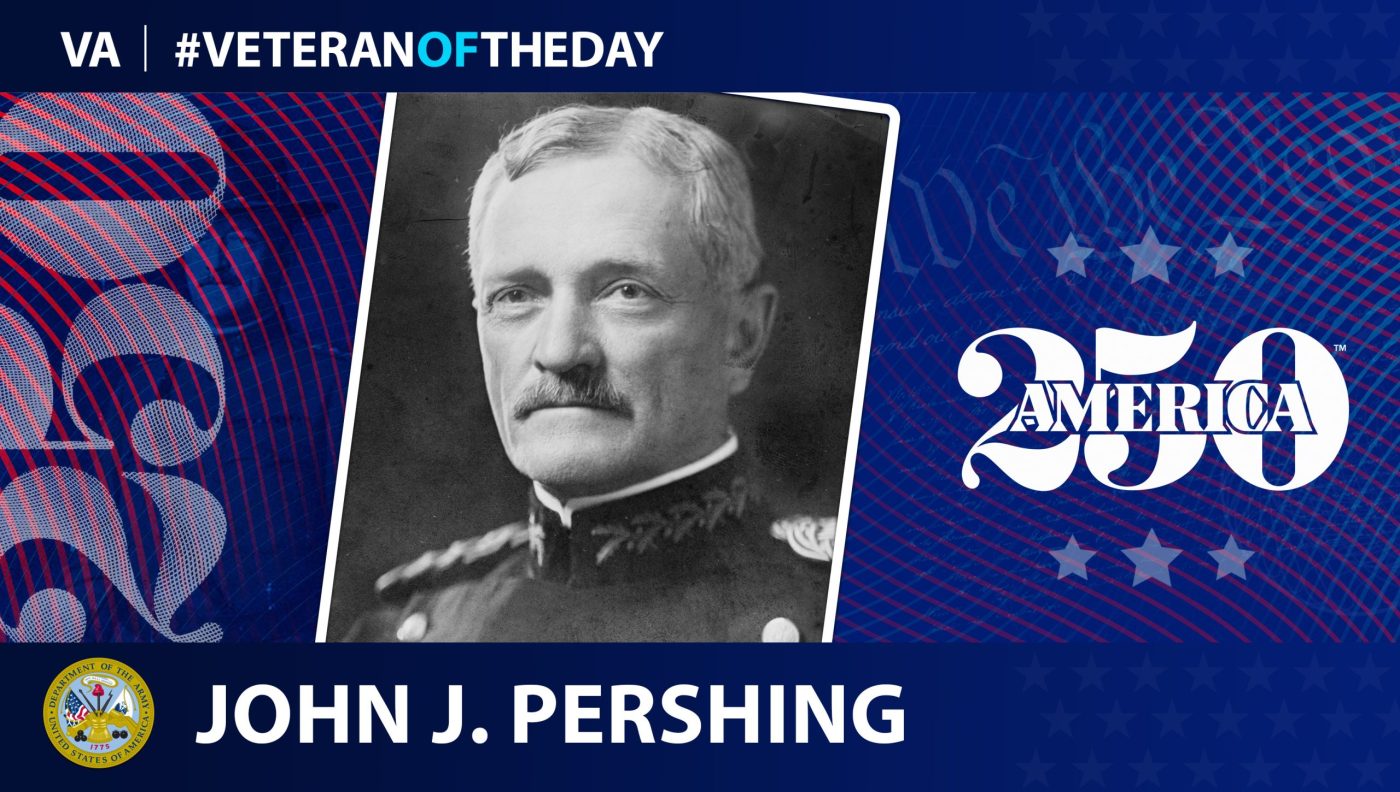
This week’s America250 salute is Army Air Forces Veteran Henry “Hap” Arnold.
Henry “Hap” Arnold was born in Gladwyne, Pennsylvania, in 1886, and entered college at West Point in 1903. He graduated in 1907, but his interest after graduation was the cavalry, not aircraft. According to an Air Force Magazine article on Arnold, “he complained vigorously” when assigned to the infantry. On his way home from his first assignment in the Philippines, he witnessed the French aviator Louis Blériot’s famous plane. Upon his arrival back to the U.S., he requested to move from infantry into aeronautical work. He received an opportunity in aeronautical work, which started his aviation career.
Arnold’s assignment took him to Dayton, Ohio, where he learned to fly aircraft at the instruction of the Wright brothers. In the years before World War I, he taught service members how to fly. After America’s entry into the war, he became the assistant executive officer then eventually the assistant director of the Office of Military Aeronautics.
Although aircraft were not used extensively in World War I, Arnold fought for increased funding and training for aviation services in the military. Arnold viewed the small number of aircraft sent to Europe in World War I as inadequate. In the famous 1925 court-martial against Billy Mitchell, who led American air forces in Europe during World War I, he testified on Mitchell’s behalf, supporting the growth of air power in the U.S., according to Arnold’s Air Force Biography. This was a risky political and career move at the time, but Arnold understood the future of aircraft.
In the interwar years, he continued to push for the expansion of air power in the U.S. He helped his case by flying a formation of aircraft in a roundtrip from Washington, D.C., to Fairbanks, Alaska, according to a HistoryNet Article. This long-distance trip earned him a Mackay Trophy, an honor for distinguished flights, and helped build America’s confidence in aviation.
U.S. Army Chief of Staff George Marshall named Arnold commanding general of the Army Air Forces in March 1942, only months after the U.S. entered World War II. Upon America’s entry into the conflict, air power proved to be vitally important for the execution of the island-hopping campaigns in the Pacific theater and for aiding the Allies in Europe.
According to an Air Force Magazine article, Arnold had a lot of independence in running his operation and brought a “titanic energy” to the office. Arnold succeeded in expanding the Army Air Forces, giving out contracts to expand production capabilities. In December 1944, he promoted to five-star general and, in the same year, received a Distinguished Service Medal.
After America’s success in World War II, Arnold lobbied for the Army Air Force to become an independent branch of the military, considering its growing importance and administration. Although Arnold retired in June 1946, the Air Force became an independent service on Sept. 18, 1947. Arnold was named general of the Air Force in May 1949.
Arnold passed away in January 1950 at the age of 63.
We honor his service.
America250
VA is highlighting 250 Veterans leading up to July 4, 2026, which marks 250 years of independence. Learn more about the countdown to 250 years of the American spirit at https://america250.org/.
Contributors
Writer: Ryan Beane
Editors: Annabelle Colton and Julia Pack
Fact Checker: Frank Grabarz
Graphic Designer: Kiki Kelley
Topics in this story
More Stories
Today's America250 and #VeteranOfTheDay honors Army Veteran Clifford Sims, who was posthumously the Medal of Honor.
America250 wants you to share your story. We want to hear the story of your service and your reflections on our nation’s past, present and future.
Today's America250 and #VeteranOfTheDay is Army Veteran John J. Pershing, who became General of the Armies of the United States, the highest rank possible for any member of the United States Armed Forces.





